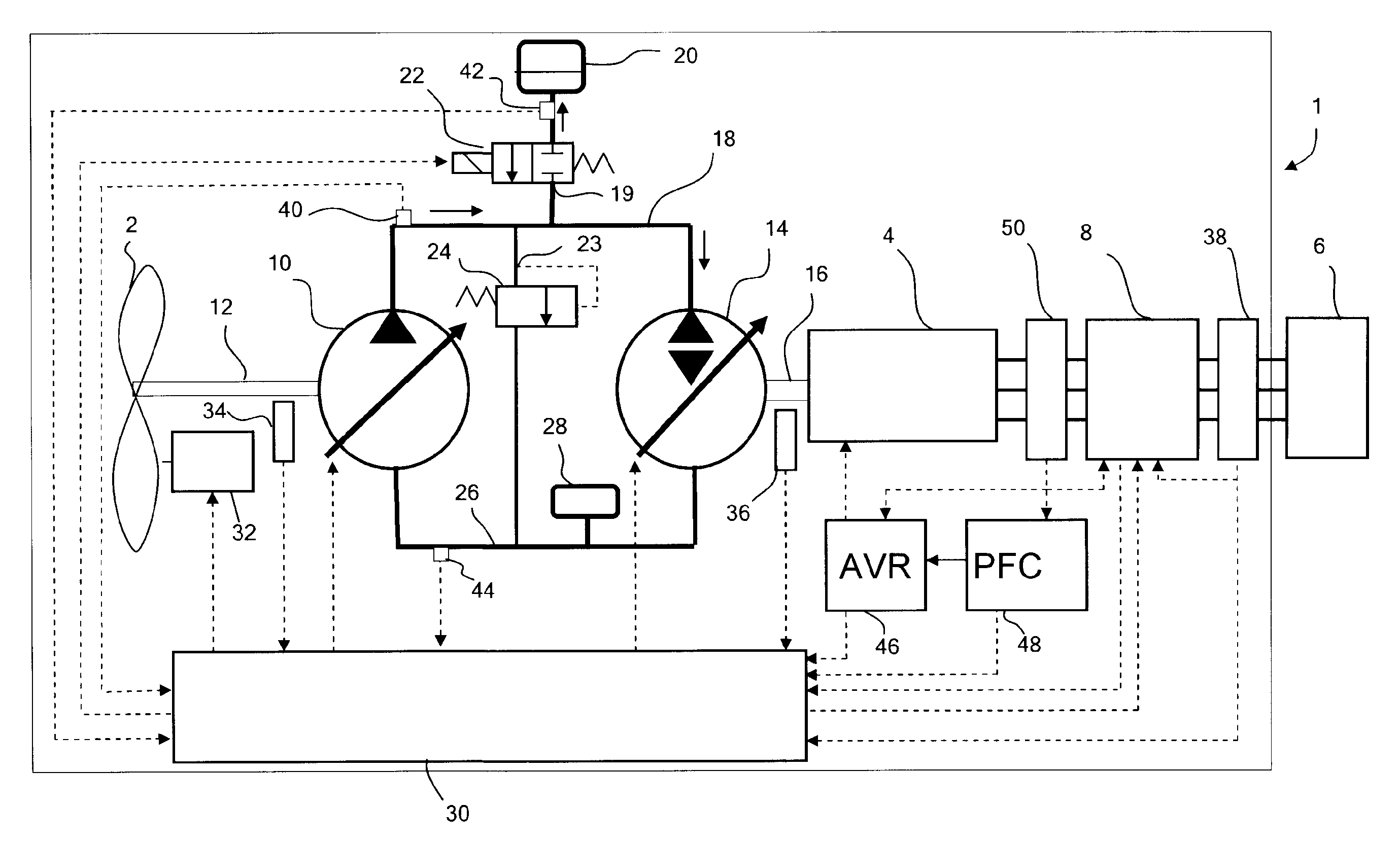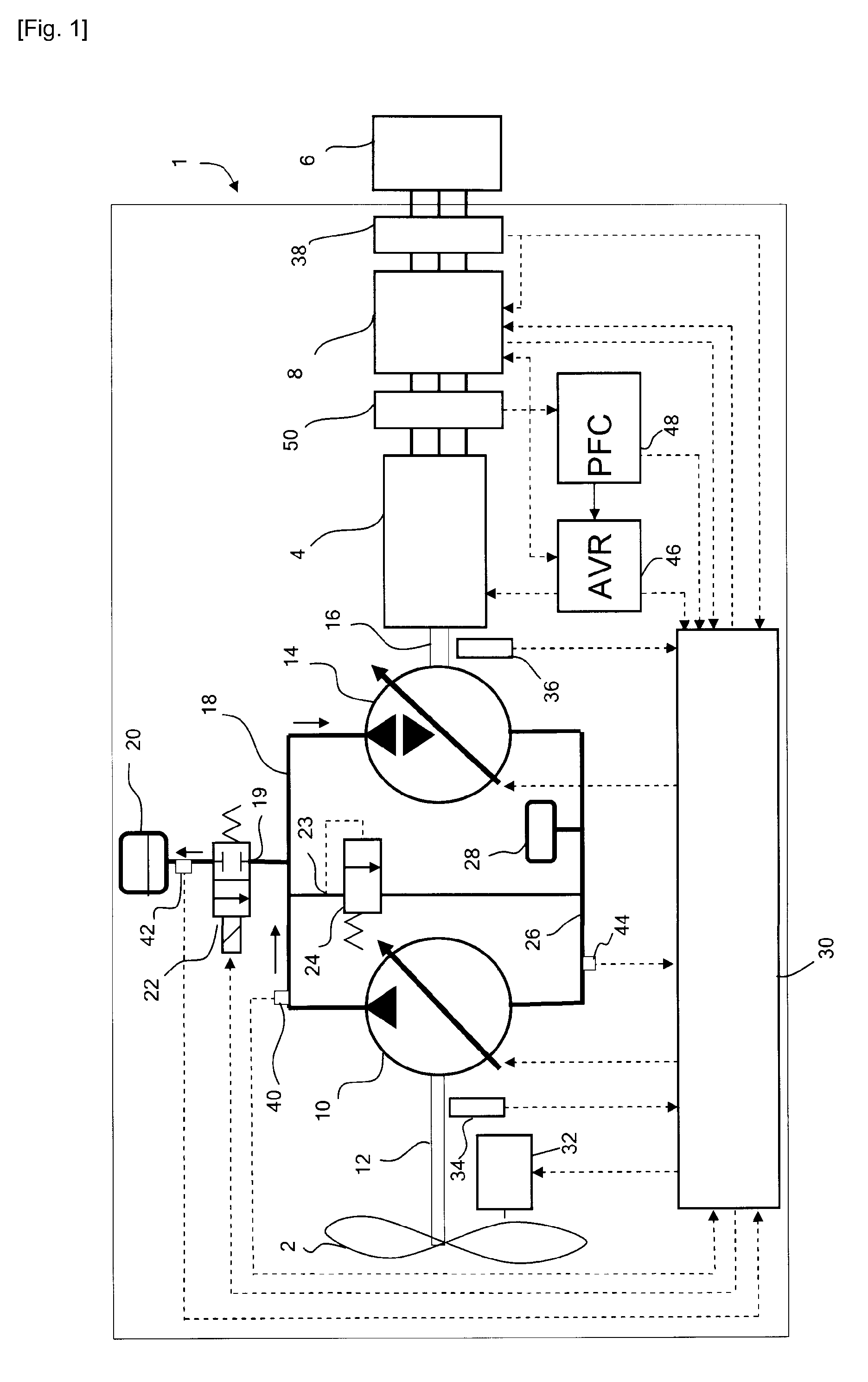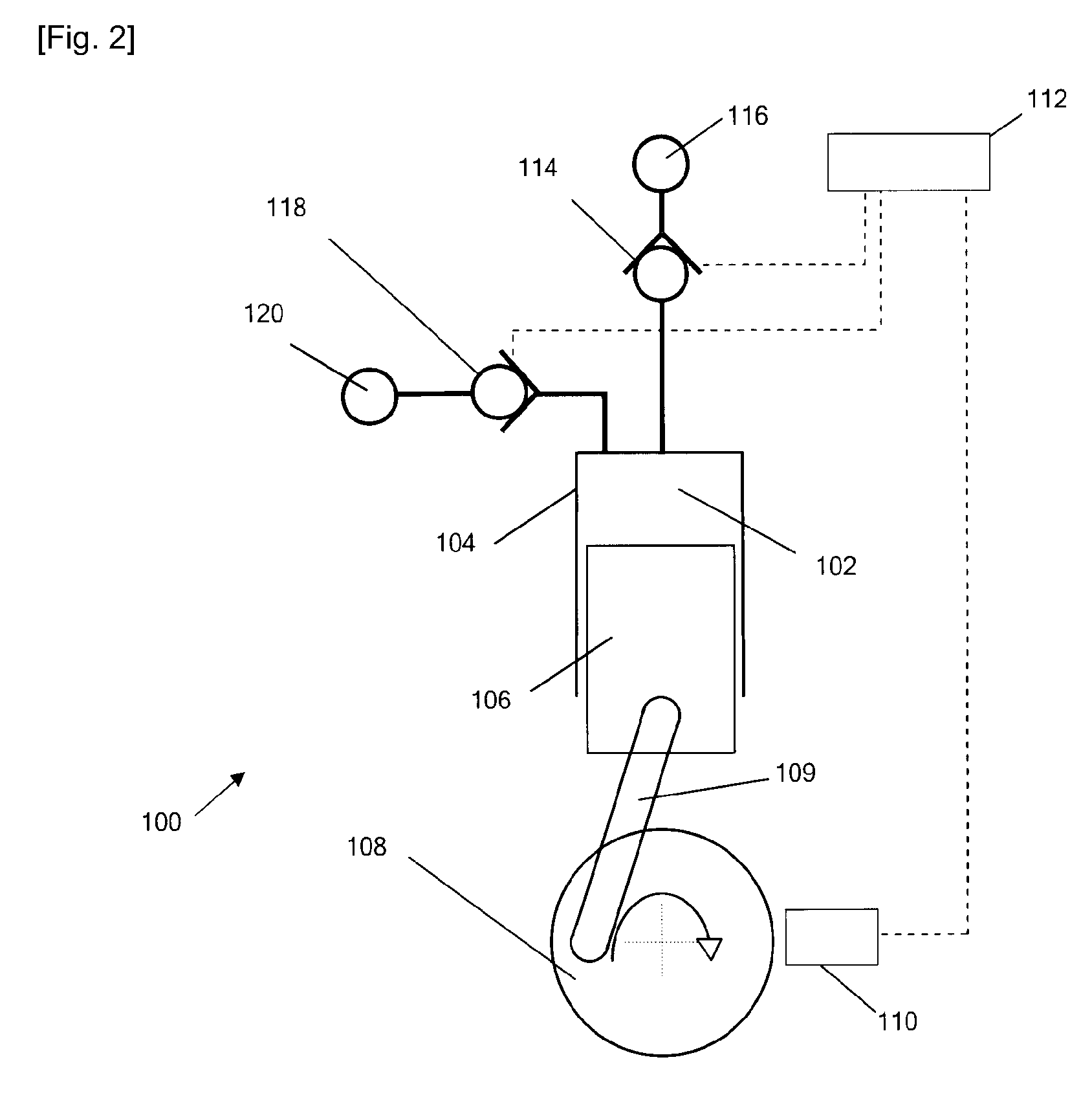Renewable energy extraction device tolerant of grid failures
a renewable energy and grid technology, applied in the direction of electric generator control, greenhouse gas reduction, gearing, etc., can solve the problems of accelerating quickly beyond synchronous speed, substantial problem of electricity generators, and occasionally failing electric grids, so as to reduce the maximum absorbable torque of generators
- Summary
- Abstract
- Description
- Claims
- Application Information
AI Technical Summary
Benefits of technology
Problems solved by technology
Method used
Image
Examples
Embodiment Construction
[0078]With reference to FIG. 1, a wind turbine generator 1 comprises a variable-pitch turbine 2 and a synchronous electrical generator 4. The electrical generator is connected to a 3-phase grid 6 (typically operating at 50 Hz or 60 Hz), through a synchronising circuit breaker 8. The connection is effectively a direct connection, without significant buffering capacity.
[0079]Wind energy from the turbine is transmitted to the electrical generator through a hydraulic transmission. The hydraulic transmission includes a variable-displacement hydraulic pump 10 drivably connected to the turbine by a driveshaft 12, and a variable-displacement hydraulic motor 14 connected to the rotor of the electrical generator by a further drive shaft 16. Further details of the variable-displacement hydraulic pump and motor are discussed below, with reference to FIG. 2.
[0080]A pressurised fluid manifold 18 (functioning as the high-pressure transmission manifold) extends from the outlet of the hydraulic pump...
PUM
 Login to View More
Login to View More Abstract
Description
Claims
Application Information
 Login to View More
Login to View More - R&D
- Intellectual Property
- Life Sciences
- Materials
- Tech Scout
- Unparalleled Data Quality
- Higher Quality Content
- 60% Fewer Hallucinations
Browse by: Latest US Patents, China's latest patents, Technical Efficacy Thesaurus, Application Domain, Technology Topic, Popular Technical Reports.
© 2025 PatSnap. All rights reserved.Legal|Privacy policy|Modern Slavery Act Transparency Statement|Sitemap|About US| Contact US: help@patsnap.com



